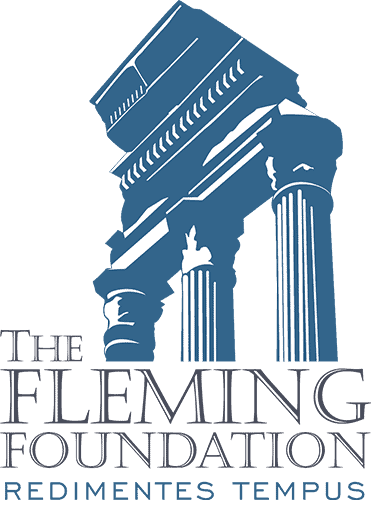Properties of Blood, I.5: Revenge, Conclusion
In our own time vengeance is the predictable plot-device in pulp fiction thrillers and the apparently endless series of films inspired by comic books. In one series of ludicrous films, the union of superheroes is even known as “The Avengers.”
Americans have not confined their dreams of vengeance to popular entertainment. The newspapers are filled with cases of vengeance-killings. The rise in cases (both fictional and real) of vengeance is not limited to men killing men or getting even with their ex’s: Feminists have made heroes out of women who killed (as in the case fictionalized in The Burning Bed) or mutilated abusive husbands (John Bobbitt), and a popular film of 1996 (The First Wives Club) glorified three cast-off wives getting even with their ex-spouses. Women’s magazines, like Cosmopolitan and Redbook are filled with tales of vengeance against ex-husbands and disloyal lovers, and a profitable business in so-called “revenge pornography” being conducted in the less savory neighborhoods of the World Wide Web.
The popularity of revenge stories in films and women’s magazines may reflect nothing more serious than a kind of cultural “back-to-basics” movement. Social analysis and introspection are out; direct action, increasingly, is “in.”
But why is it in? And why are there so many manifestations of the self-help principle turning up among street gangs in major cities, neighborhood watch groups in the suburbs, and armed militias out in the plains and prairie states? Taken singly, each movement can be explained or justified by the assumed righteousness of its cause: Homosexual activist groups, for example, express impatience at the slow progress of AIDS research; some right-to-life groups say they have given up on the legal system which no longer protects the life of the unborn; gang-bangers declare in interviews that their only community is their neighborhood and their gang, and they expect nothing from agents of the government or from any people they do not know face-to-face. “The hood is my country.”
These arguments, which are paralleled by statements issued from militias and eco-terrorists, can be reduced to a commonplace: The “system” cannot be relied upon either for justice or protection, and ideological movements and neighborhood groups--of whatever type--seem to offer a moral alternative to a failed criminal justice system. One study of ten neighborhoods in the 1980’s concluded that communities could not afford to put their trust in government: “Where previously the moral order of the local community may have been dependent solely on economic and political forces external to the area...the sustenance of the moral order requires an effective neighborhood-based political order.”
Rightly or wrongly many people apparently believe that we no longer live in a safe or just society, and they do not necessarily trust the FBI’s figures on declining crime rates, which are collected from police departments with every incentive to cook the books. Fear of crime acts like a social poison, encouraging suspicion of social authority and reducing human relations to a dog-eat-dog paranoia. Predatory crime, in particular, “atomizes society and makes of its members mere individual calculators estimating their own advantage, especially their own chances for survival amidst their fellows.”
America may never have been the safe haven for the bourgeoisie depicted in Norman Rockwell covers and celebrated in Frank Capira films and in the pages of Readers Digest, but people old enough to remember the 1940’s and 50’s (as I can, barely) recall houses left unlocked and suburban children allowed to take the train into downtown Chicago or Manhattan and roam the streets without anxiety.
The cozy world of 50’s suburbs was shattered by a series of celebrated shooting sprees: In four days of January 1958 Charles Starkweather and his girlfriend murdered 11 people in Nebraska and Wyoming for no rational reason. In 1959 Richard Hickock and Perry Smith killed the Clutter family in cold blood. In 1966 Charles Whitman climbed the bell tower at the University of Texas, Austin, and killed 17 people. In 1979 16 year old Brenda Spencer was in a bad mood and opened fire on elementary school students. Since then, random violence at schools and movie theaters has become an almost acceptable cost of modern living. In housing projects children shoot other children for living in a section controlled by a rival gang, and in small-town public schools middle-class white children kill their schoolmates over social snubs, disappointed romances, or just to make a statement of who knows what they want to say.
Since World War II, the United States has experienced a rise in violent crime and a decline in respect for law. Although it seems as if everyone is aware of the problem, pundits and journalists like to blame contemporary violence on America's frontier legacy, and the blame is routinely put on vigilantes, lynch mobs, and the thirty second gunfight at the OK Corral. A closer look at the history of the American West does not support these generalizations. In fact, as one western historian has pointed out, the most violent towns in the West were probably safer than 19th century Boston or New York and vastly more peaceful than American cities today. Paradoxically, he argues, it was the very fact that men were armed and potentially violent that deterred would-be criminals.
The terrifying quality of modern crime is its seeming irrationality and randomness. To be brutalized or killed is bad enough, but the thought of dying at the hands of strangers, without ever knowing the reason, is highly unsettling. Much frontier violence, on the other hand, was of the type encountered in the modern rural South, where grown men beat or kill each other for what seem to them perfectly good reasons: He stole my girl, cheated at cards, insulted my mother, or kicked my dog. The duel and its cruder Western version, the gunfight, were cases of homicide between consenting adults. It is not difficult to understand why states passed legislation outlawing these sports, but pistols at dawn on a Mississippi River island does not threaten the peace in quite the same way as a drive-by shooting does.
As serious a problem as fact of an increase in crime, the more serious problem may be the widespread perception that the public is not protected by the forces of law and order, that only criminals have rights, that violent criminals do not receive the punishment they really deserve. In the bland world of public policy discussions, this paranoia gives rise to proposals for victims' rights, but on the streets and in their houses some Americans are turning away from the idea that law and order are services provided exclusively by government, and toward the age-old philosophy that if you want something done well, you have to do it yourself. “I got rights,” some of them seem to be saying, “I got rights, too,” and that among these rights are defense of one’s person, family, and friends, retaliation against aggressions, and preservation of that sense of self-worth that used to go by the name “honor.”
The increase of violent self-help is far from being a welcome development, but it is the predictable result of legal and political systems build upon the grotesque misunderstanding of human nature and the necessities it imposes on men and women. Rather than pointing the finger at gang-leaders, militia groups, and religious fanatics, we should be blaming the the intellectuals whose ideas revolutionized the world from Montaigne and Montesquieu to Locke and Rousseau to Jeremy Bentham and Karl Marx. Instead of dishonoring the graves of Confederate generals, sensible men and women should be burning many of the misnamed Great Books of the Western World.



